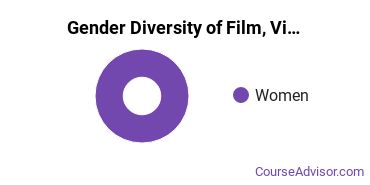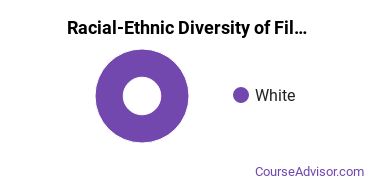Film, Video & Photographic Arts at Grace College and Theological Seminary
Every film, video & photographic arts school has its own distinct culture and strengths. We've pulled together some statistics and other details to help you see how the film program at Grace College and Theological Seminary stacks up to those at other schools.Grace College is located in Winona Lake, Indiana and approximately 1,901 students attend the school each year.
Want to know more about the career opportunities in this field? Check out the Careers in Film, Video & Photographic Arts section at the bottom of this page.
Featured Grace College and Theological Seminary Programs
Learn about start dates, transferring credits, availability of financial aid, and more by contacting the universities below.
Take the first step toward a career of visual expression and doing what you love with this online associate degree from Southern New Hampshire University.
Learn to create a striking portfolio and hone the skills you need to succeed in the world of professional photography with this online digital photography degree from Southern New Hampshire University.
Grace College Film, Video & Photographic Arts Degrees Available
- Bachelor’s Degree in Film
Featured Grace College and Theological Seminary Programs
Learn about start dates, transferring credits, availability of financial aid, and more by contacting the universities below.
Take the first step toward a career of visual expression and doing what you love with this online associate degree from Southern New Hampshire University.
Learn to create a striking portfolio and hone the skills you need to succeed in the world of professional photography with this online digital photography degree from Southern New Hampshire University.
Grace College Film, Video & Photographic Arts Rankings
The film major at Grace College is not ranked on College Factual’s Best Colleges and Universities for Film, Video & Photographic Arts. This could be for a number of reasons, such as not having enough data on the major or school to make an accurate assessment of its quality.
Film Student Demographics at Grace College
Take a look at the following statistics related to the make-up of the film majors at Grace College and Theological Seminary.
Grace College Film, Video & Photographic Arts Bachelor’s Program

The following table and chart show the race/ethnicity for students who recently graduated from Grace College and Theological Seminary with a bachelor's in film.

| Race/Ethnicity | Number of Students |
|---|---|
| Asian | 0 |
| Black or African American | 0 |
| Hispanic or Latino | 0 |
| White | 1 |
| International Students | 0 |
| Other Races/Ethnicities | 0 |
Concentrations Within Film, Video & Photographic Arts
The following film concentations are available at Grace College and Theological Seminary. The table shows all degrees awarded in this field awarded for all degree levels at Grace College and Theological Seminary. A concentration may not be available for your level.
| Concentration | Annual Degrees Awarded |
|---|---|
| Photography | 5 |
Related Majors
Related Programs
Learn about other programs related to Grace College and Theological Seminary that might interest you.
BA in Graphic Design & Media Arts
Translate your creative ideas through concept, design and digital media with a bachelor's in graphic design online from Southern New Hampshire University.
Careers That Film Grads May Go Into
A degree in film can lead to the following careers. Since job numbers and average salaries can vary by geographic location, we have only included the numbers for IN, the home state for Grace College and Theological Seminary.
| Occupation | Jobs in IN | Average Salary in IN |
|---|---|---|
| Art, Drama, and Music Professors | 2,030 | $68,070 |
| Producers and Directors | 990 | $48,300 |
| Photographers | 800 | $35,460 |
| Television, Video, and Motion Picture Camera Operators | 390 | $40,610 |
References
*The racial-ethnic minorities count is calculated by taking the total number of students and subtracting white students, international students, and students whose race/ethnicity was unknown. This number is then divided by the total number of students at the school to obtain the racial-ethnic minorities percentage.
More about our data sources and methodologies.

